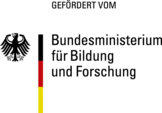Working Paper No 5 - „Chiefs do not talk law, most of them talk power“: Die Macht traditioneller Autoritäten in Konflikten um land grabbing in Ghana
Sarah Kirst – 2017
Im Kontext großflächiger Kommodifizierung von Land in Subsahara-Afrika – kritisch als land grabbing bezeichnet – kommt es vermehrt zu Konflikten. In vielen Fällen sind traditionelle Autoritäten zentrale Konfliktakteure. Während sich zahlreiche Studien mit traditionellen Autoritäten als Mediatoren und Konfliktschlichtern2 befassen, thematisieren wenige die Rolle traditioneller Autoritäten als beteiligte Konfliktakteure. Hiermit befasst sich dieses Working Paper anhand einer Fallstudie zu Konflikten um das agrarindustrielle Projekt ScanFarm in Ghana. Ich gehe der Frage nach, inwiefern die Macht traditioneller Autoritäten von Bedeutung für die Entstehung und den Verlauf von Konflikten um land grabbing ist. Dafür analysiere ich das Handeln traditioneller Autoritäten in Konflikten um Land mithilfe von Steven Lukes (1974, 2005) Konzept der sichtbaren, unsichtbaren und internalisierten Macht. Die Gruppe traditioneller Autoritäten, die für die Verwaltung von Land zuständig sind, ist durch Heterogenität und Hierarchien gekennzeichnet. Ich argumentiere, dass diese Hierarchien für die alltägliche Landnutzungspraxis zwar bedeutungslos sind, in Konflikten um land grabbing jedoch relevant werden. Die auf diesen Hierarchien beruhenden Machtverhältnisse bestimmen in Konflikten um land grabbing, wer über die Fähigkeit verfügt territoriale Kontrolle auszuüben. Das Zusammenspiel der drei von Lukes vorgeschlagenen Machtdimensionen bestimmt diese Fähigkeit maßgeblich.
In the context of large-scale commodification of land in sub-Sahara Africa – critically referred to as land grabbing – social conflicts have increased. In many of these conflicts, traditional authorities are central actors. Whereas a number of studies deals with traditional authorities as mediators and arbitrators in conflicts, the role of traditional authorities as conflict actors is hardly considered. In this paper, I address this gap. By referring to a conflict around the agro-industrial ScanFarm project in Ghana, I examine the relevance of traditional authorities’ power for the emergence and course of conflicts over land grabbing. Using Steven Lukes’ (1974, 2005) concept of visible, hidden and internalized power I analyze the actions of traditional authorities in conflicts over land grabbing and demonstrate the heterogeneity and hierarchic structure of the group of traditional authorities responsible for the management of lands. I argue that existing hierarchies are insignificant for everyday land use practices but become relevant in conflicts over land grabbing. Power structures resulting from these hierarchies influence who is able to carry out territorial control, which in turn is crucial when it comes to conflicts over land. The interplay of Lukes’ three dimensions of power considerably shape this ability.

